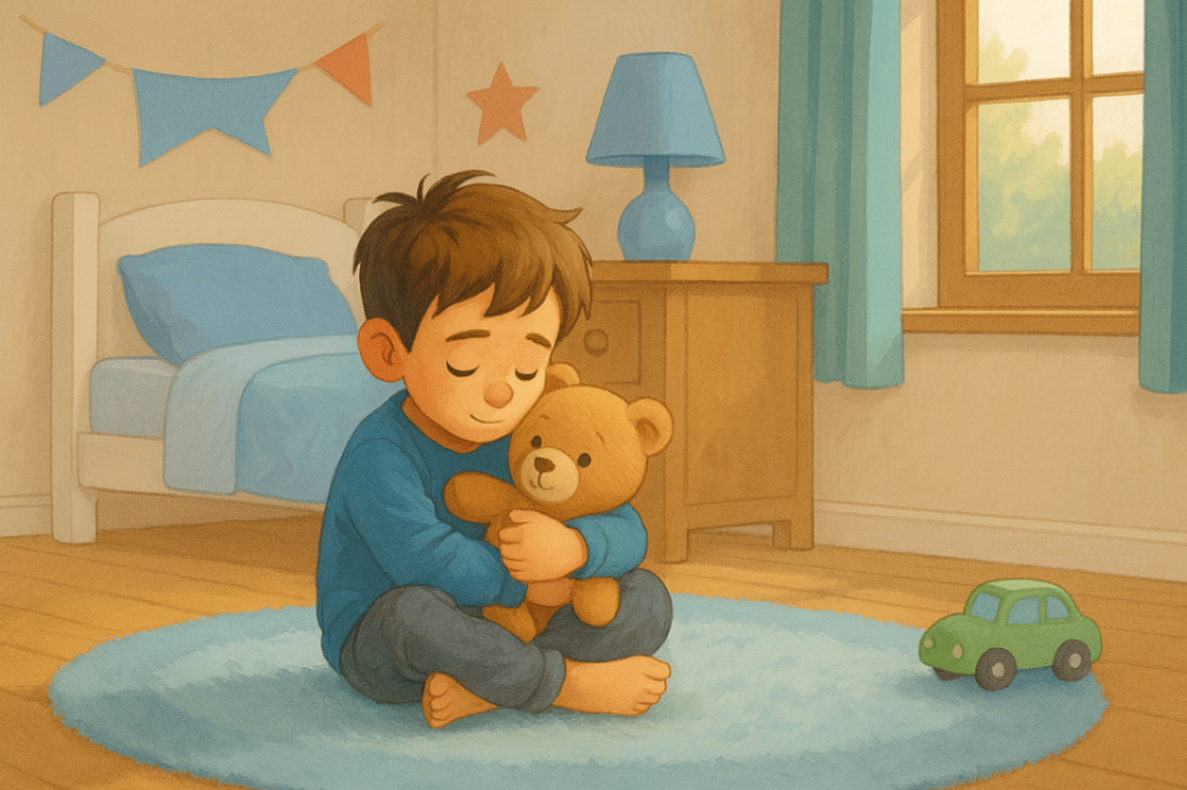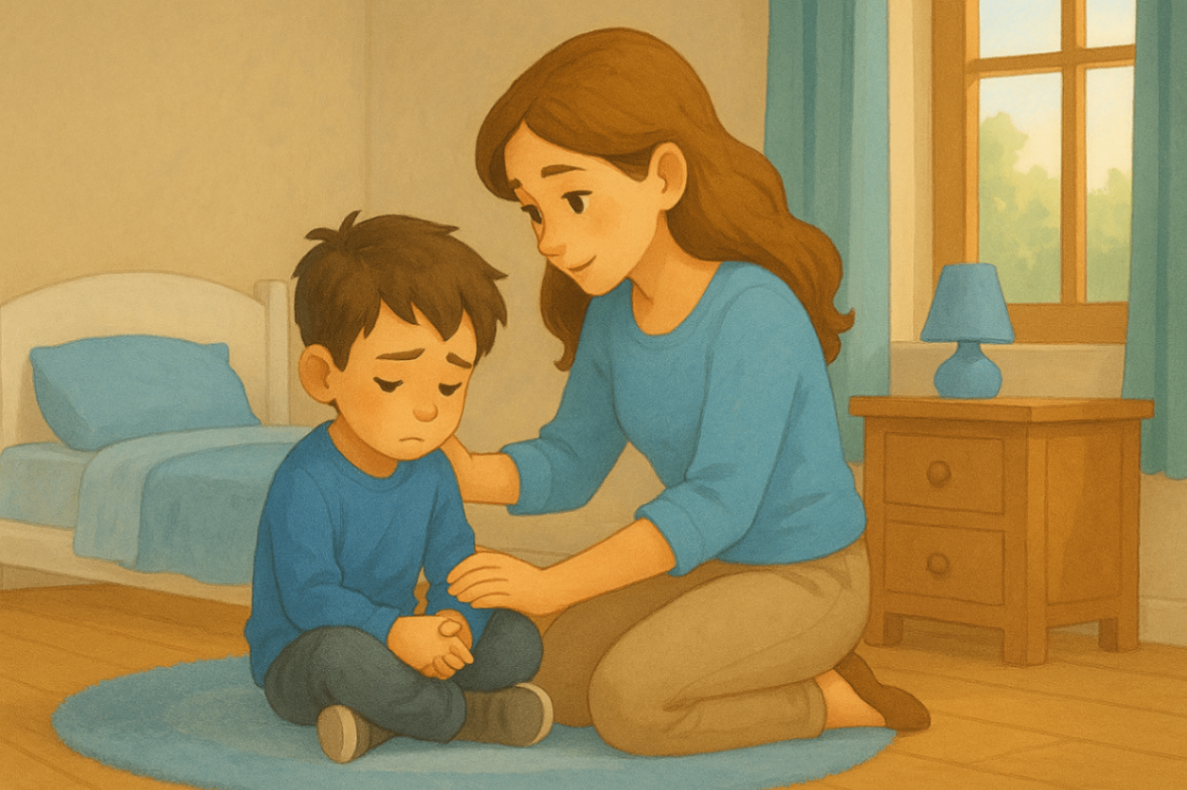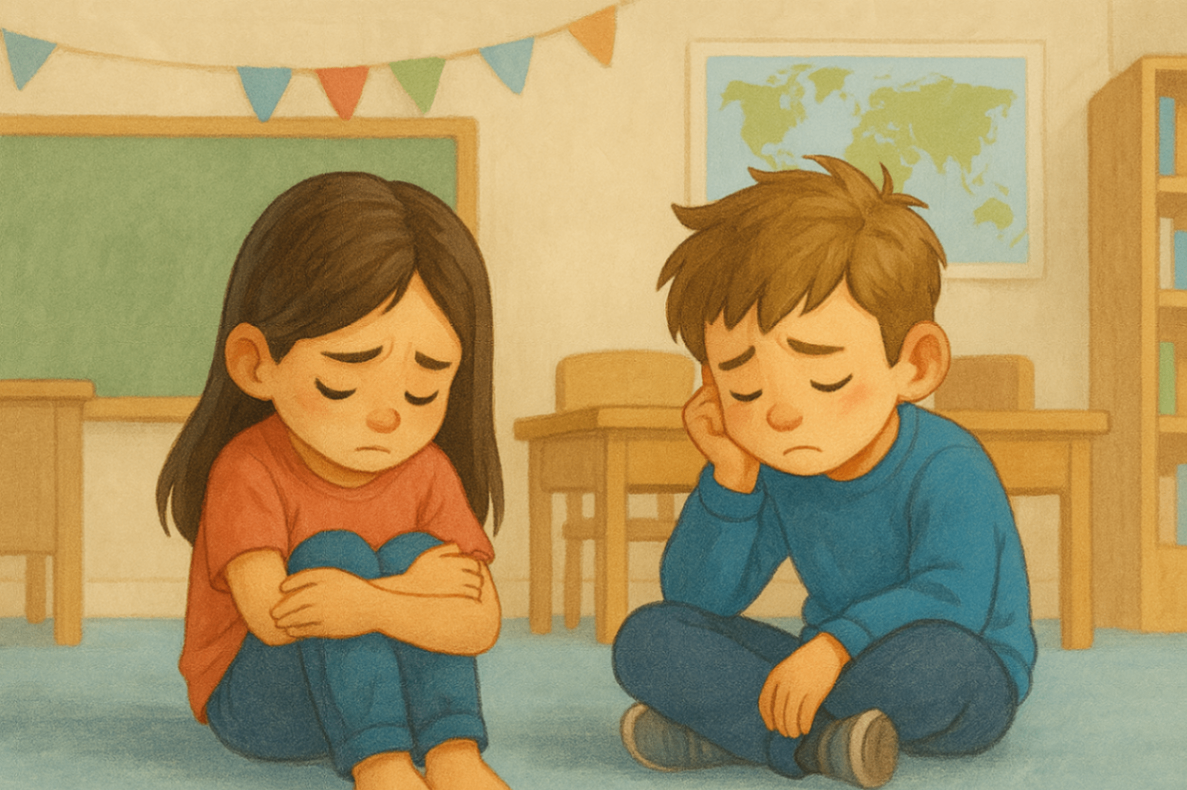
identifying & managing behaviours of concern in children | ndis
23 July, 2025

Key Highlights
-
Behaviours of concern, such as physical and verbal aggression, significantly impact the quality of life for children, caregivers, and educators.
-
The National Disability Insurance Scheme (NDIS) emphasises positive behaviour support to address these challenges effectively.
-
Behaviours of concern NDIS – physical and verbal aggression, self-injury and sensory overload – can profoundly affect children, caregivers & educators.
-
NDIS behaviour therapy emphasises positive behaviour support (PBS) and child behaviour support plans to reduce triggers and build skills.
-
Functional behaviour assessments (FBAs) guide tailored interventions that improve quality of life and social interactions.
Introduction
When children exhibit behaviours of concern—from hitting and kicking to extreme withdrawal—it often signals unmet needs or sensory overload. Under the NDIS, early intervention through NDIS behaviour therapy and structured child behaviour support helps families, teachers and support workers collaborate on safe, person-centred solutions.
Understanding Behaviours of Concern in Children
 Understanding why children show certain behaviours can be complex. Many things can affect how the child acts. Behaviours of concern range from physical aggression and verbal aggression to repeated actions or intense emotional outbursts. In many cases, sensory triggers (like loud noises) or communication barriers lead to frustration.
Understanding why children show certain behaviours can be complex. Many things can affect how the child acts. Behaviours of concern range from physical aggression and verbal aggression to repeated actions or intense emotional outbursts. In many cases, sensory triggers (like loud noises) or communication barriers lead to frustration.
These can happen because the child may have medical issues or get upset from too much noise or other senses—this is called sensory overload. When caregivers see these signs, they can step in to help the child grow and feel better. Recognising these warning signs is the first step in effective behaviour therapy.
Using positive behaviour support and helping kids learn new skills can help improve their social skills too. When you know what makes the behaviour happen, you can find ways that work for each child. This means caregivers will help their quality of life, make better plans, and see good changes in the child's day.
Definition and Characteristics of Behaviours of Concern
Behaviours of concern are any actions that interfere with a child’s daily life or pose risk to themselves or others, highlighting the behaviour of concern. Common examples include:
-
Physical aggression (hitting, biting)
-
Verbal aggression (yelling, threatening)
-
Withdrawal or avoidance
-
Repetitive movements or stimming
-
Over- or under-responsiveness to sensory input
Spotting these early—especially in children with autism or other disabilities—enables targeted PBS strategies that reduce reliance on restrictive practices.
It is important to be able to spot these behaviours. There may be medical issues or developmental things going on like autism. If caregivers know what is happening, they can use better ways to help. This will make life better and improve the quality of life for the child.
Common Behaviours of Concern Observed in Children
Children may display:
-
Aggression in response to sensory overload
-
Emotional meltdowns triggered by routine changes
-
Social withdrawal due to communication difficulties
-
Self-injury when overstimulated or in pain
Understanding these patterns allows your NDIS behaviour therapy provider to craft a child behaviour support plan that addresses root causes, not just symptoms.
What are common examples of behaviours of concern in individuals?
Common examples of behaviours of concern in individuals include aggression, self-injury, excessive tantrums, and withdrawal from social interactions. These behaviours can manifest due to various underlying issues, such as common reasons like developmental disabilities or emotional distress, necessitating a tailored approach for effective management and support within the NDIS framework.
Causes and Triggers of Behaviours of Concern
 Frustration often arises from:
Frustration often arises from:
-
Sensory overload (bright lights, loud environments)
-
Communication challenges (inability to express needs)
-
Medical issues (pain, discomfort)
-
Environmental factors (chaotic settings, lack of routine)
By pinpointing triggers through collaboration, caregivers can apply positive behaviour support techniques and witness real improvement in quality of life. Caregivers have a big part to play here. When they watch and listen to the child, they can learn what sets off the behaviour. Knowing more about the child’s background and what triggers them can help with positive behaviour support. This can lead to better ways to support positive behaviour. It can also give the child a better quality of life. If caregivers understand these things well, they can help everyone get along better.
Developmental and Environmental Factors
Both developmental and environmental factors shape behaviours of concern. Delays in social skills can make it hard for children to get along with others. This struggle may lead to frustration or acting out.
If the setting is too loud or confusing, children who are sensitive to noise or activity may get upset. On the other hand, if a place feels lonely or boring, children may pull away from others or repeat certain actions.
It's helpful to change a child's surroundings to meet their sensory needs. For example, creating quiet spaces or keeping things less noisy may help. It also helps to have clear routines. This gives children a sense of safety and helps them know what to expect. Understanding these things lets us step in early and find ways to help each child manage their behaviour.
“Noticing early warning signs? Check out Signs Your Child May Benefit From Positive Behaviour Support.
The Role of Disability in Behavioural Challenges
Disabilities such as autism spectrum disorder often amplify sensory sensitivities and communication barriers. Effective NDIS behaviour therapy combines medical insights with PBS to teach replacement skills that reduce aggression and withdrawal.
It is very important for caregivers to understand the medical issues and what triggers these behaviours. When caregivers know more, they can use better ways to help each child. This can lead to positive behaviour. It also makes the child’s quality of life better and helps them build new skills they need.
Approaches to Identifying Behaviours of Concern Under the NDIS

Identifying behaviours of concern under the NDIS needs a clear plan for each child. This plan should be made just for them. Functional Behaviour Assessments (FBAs) are very helpful tools for this work. They help us see what is going on underneath the behaviour. These assessments look at things like the child's environment, how they act with people around them, and how they respond to sounds or touches. This helps us understand why a child may show physical aggression or other challenging behaviour.
When we work together with caregivers, we can find better ways to support the child. These shared plans can help build more positive behaviour. In the end, this can help make life better for everyone involved and improve the child's quality of life.
Want to understand the foundation of these positive approaches? Learn more in What Is Positive Behaviour Support? A Guide for NDIS Families in Liverpool.
Functional Behaviour Assessments (FBAs)
Functional Behaviour Assessments (FBAs) help find out how a child's environment affects their behaviour. These tools look at what is happening around the child and how it may cause certain actions that worry parents or caregivers. By watching the child and collecting information over time, FBAs show if triggers like sensory overload or medical issues are the cause. This can help spot signs of physical aggression or other outbursts.
With what they learn, caregivers and other people who work with the child can make positive behaviour support plans just for them. These plans help the child build better social skills and bring up their quality of life, especially for kids with autism. FBAs are one way to give all children the support they need for a happier life.
Collaboration Between Families, Educators, and Professionals
Good behaviour management depends on working together. Caregivers, teachers, and health workers all help. Parents know a lot about the child’s daily routines. Teachers see how the child acts with others and in class.
Clear and regular talks help everyone understand what to do. For example, if a student has a hard time with changes, both home and school can use simple pictures to help with moving from one thing to another.
Experts can check the behaviour and give ideas for treatment. This helps make sure the plans fit the child. When everyone is a team, it boosts the child’s quality of life. It also gives parents and teachers more trust in what they do.
Strategies for Managing and Supporting Positive Behaviour
Using strategies to manage and support positive behaviour means taking a broad approach. This uses positive behaviour support (PBS) systems made for each person’s needs. Doing activities that build social skills helps people interact better. It is also important to look at sensory overload, as this can stop triggers that lead to behaviour issues. Caregivers should be part of the process. This makes it a team effort to support positive behaviour. With this full method, children can learn new skills. It also helps them have a better quality of life if they have behaviour challenges.
“Curious how the NDIS structures these supports? Dive into Introduction to NDIS Behaviour Support to see how plans are built
Positive Behaviour Support (PBS) and Person-Centred Approaches
Positive behaviour support (PBS) is a way to help children who show behaviours of concern. It works by looking for what is behind their behaviour, like sensory overload or problems in talking that are common in autism. With PBS, caregivers use person-centred approaches to help each child. This means they can teach new skills and build up social skills, so there is less chance of verbal or physical aggression. This team effort gives children the support they need. It lets them grow, have a better quality of life, and find positive ways to show how they feel.
How Our Liverpool Clinic Support Your Child
At daar, we make plans that fit each child to help with behaviours that worry you. We use positive behaviour support to boost social skills, manage sensory overload, and address both verbal and physical aggression. Caregivers are a vital part of this team effort, ensuring we consider all angles and uphold your child’s quality of life. We help each child learn new skills and identify the triggers behind their behaviours, building a safe, supportive environment where every kid can thrive.
Service Locations
daar proudly delivers in-home and community-based NDIS behaviour support across Liverpool, including Casula, Moorebank, Prestons, Chipping Norton, Austral, Holsworthy, Green Valley, Edmondson Park, Warwick Farm, Hinchinbrook and nearby suburubs. Our accredited NDIS behaviour support practitioners are just a short drive away.
Contact our team today to discuss how we can support your child’s journey.
Conclusion
It is important to understand and manage behaviours of concern in children under the NDIS. This helps kids grow, learn, and feel good. When families and professionals notice what causes certain behaviour, they can work well together. Using positive behaviour support and Functional Behaviour Assessments can make a real difference. These ways not only help with any problems right away, but they also help the child keep getting better over time. I
Frequently Asked Questions
What is the NDIS’s approach to behaviours of concern in children?
The NDIS looks at ways to understand and work with behaviours of concern by making support plans made for each child. It works with families and also with professionals. Together, they use ideas that have been tested and shown to work. The main goal is to help bring about positive behaviour in children and to always pay attention to what the child needs and what is happening in their life. This way of doing things helps make a caring and safe place for the child.
How can parents differentiate between normal and concerning behaviour?
Parents can tell the difference between normal and worrying behaviour by looking at how often it happens, how strong it is, and when or where it takes place. If these actions get in the way of daily life, keep happening, or make the child or others upset, it's important to get help from a professional. This way, the child can get the right support.
What interventions are most effective under the NDIS?
Effective help for children under the NDIS often uses Positive Behaviour Support plans. There are also therapy sessions made for autism needs. Skill-building methods are used as well. These can include things like making changes for the senses, setting up a daily routine, and giving caregivers some guidance. All these steps can help kids learn ways to deal with things. They also support the child's full growth and development.
Are restrictive practices ever used with children under the NDIS?
Restrictive practices are not used as the usual way in the NDIS. The main focus is on Positive Behaviour Support. This helps children and their caregivers learn to swap bad behaviours for good actions. Special safety steps are only put in place when there is a clear need to keep someone safe, and these are always watched closely.
Where can families seek help for managing behaviours of concern?
Families can get help to manage behaviours of concern from different places. These places include local support services, pediatricians, psychologists, and special clinics. Some community resources and NDIS-funded supports can also help. They give plans and steps that are made just for your child. This makes behaviour management better and works for your family.
.svg)












